The answer to the question of which is best is solely dependent on the requirements of your project, and it’s important to understand that there are pros and cons to both types of printing methods so you can identify which is best for you.
Now that we are very much in the ‘digital age’ it is hardly surprising that even the way in which we print has become largely digitalised too. In fact the digital printing market is predicted to reach 225% of the 2013 value by 2024* demonstrating just how much this avenue has grown.
However, there is still a space for screen printing and often these two methods are compared, but is one better?

Screen Printing
Screen printing is a technique in which a design is transposed onto a fine-mesh screen which is then transferred onto the printing material using a rubber squeegee and ink.
If you are looking to print something in process colour, screen printing may not be the best solution for you. The set up involved is arduous and time consuming often meaning the unit costs for lower quantities can be high, reducing as you order more (meaning you can save money if you’re ordering in bulk but are usually required to make a larger upfront investment). Not ideal if you are looking to print a handful of units, in fact, many printers will have a minimum order requirement which could run into the many hundreds to justify the cost of the origination.
On the other hand, screen printing is extremely versatile when it comes to the material that can be used to print onto. It is often possible to screen print onto a much wider variety of materials compared to digital printing including wood, textiles, and glass.
Although digital printing is rapidly gaining acceptance for its ability to print onto a much greater selection of materials due to ink manufacturing improvements, one big plus is the longevity of the printed matter. Screen printing inks outperform digital inks every time in regards to durability, so if you are looking to create a product that you know will undergo significant wear and tear, screen printing will allow for this, meaning your design will last longer.
How screen printing works lends itself to designs with block colours or text (making it ideal for printing logos and company branding). You are often able to achieve a very crisp design using block colours and screen printing can use metallic and fluorescent colours which aren’t available through digital printing, thereby providing an added flexibility.
Despite being flexible in terms of print material, screen printing does offer far less flexibility when it comes to personalising a design. As previously mentioned, the set up process for screen printing is long and involved meaning it is difficult to change individual parts of a design compared to digital printing in which customisation is relatively easy. You can get around this by printing the personalised parts of your design separately but this isn’t always the best solution if you want a well finished product.
Digital Printing
Digital printing is a much newer process done by imaging the design onto the material using computer technology. Typically this is used for simpler applications compared to screen printing for example, direct mail, tickets and flat prints but can achieve better results for more complex designs.
While digital printing is not as flexible as screen printing in regards to the materials that can be used, the finish is often much sharper and more detailed than what is achievable with screen printing. For example, if you had a design that had small lettering or an intricate pattern included, digital printing would most likely be a better solution for you, particularly as screen printing can cause colours to ‘bleed’ into each other.
However, if design is less of a priority for you but colour is something of more importance, then screen printing is a solution you should consider. One of the more significant downsides to digital printing is its limited use of colour whereas screen printing uses ‘true colour’. Not only does this mean you will achieve a colour closer to your design, you will also often achieve much brighter, more vivid colours which is of particular importance if you are printing on a darker material.
We Can Do Both
There isn’t necessarily a ‘better’ option overall, only a better option for your specific project depending on the outcome you are looking for.
At Evans Graphics, we accommodate for both digital and screen printing no matter what your project is. We have invested in modern machinery to establish ourselves as a leading digital printing company, whilst staying true to the screen printing process which endures for good reason.
*https://www.smitherspira.com/news/2014/april/digital-printing-to-remain-strong-until-2024


